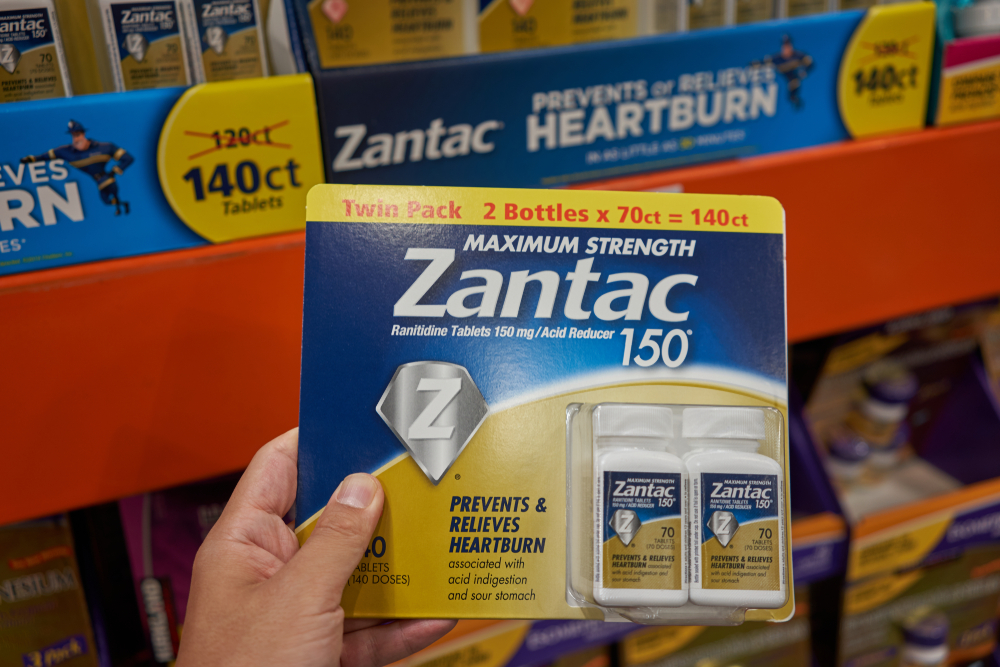In October 2010, The US Food and Drug Administration (FDA) approved the use of Pradaxa as an anticoagulant alternative to warfarin. The owners of the drug, Boehringer Ingelheim Pharmaceuticals (BIP), had recently paid for the Randomized Evaluation of Long-term anticoagulant therapy (or RE-LY trial), which they claimed showed their drug was more convenient while equally as effective as warfarin.
Based on these findings, the American College of Cardiology Foundation and the American Heart Association recommended dabigatran for the treatment of non-valvular atrial fibrillation. By 2011, Pradaxa had surpassed all other drugs in numbers of reports to the FDA of serious adverse effects. Despite this, the drug made BIP over a billion dollars in its first two years.
The first wrongful death and personal injury suits were put forward in the year of the drug’s release, and in 2012, the first Multidistrict Litigation (MDL or “Class Action”) was brought to the courts, with over 4,000 claims filed. By 2014, Pradaxa had been linked to over a thousand deaths, and BIP settled the class action for over $650 Million.
It was not until 2015 that an antidote for Pradaxa was created. In the same year, the FDA extended the approval of the drug for a range of other uses, and doctors kept prescribing it.
Today, Pradaxa remains one of the most commonly prescribed anticoagulant drugs on the market. In 2019, BIP settled a case with a single plaintiff for half a million dollars, and another case settled for a million dollars the year before.
If you or someone you loved was taking Pradaxa before 2015 and experienced complications, you may be eligible for legal compensation. Fill out the provided form below to receive information from a legal professional. They will walk you through the steps to evaluate your situation and help develop a path to finding closure. Most lawyers are willing to work on a contingency basis, only taking fees if they are able to help with your problem.
The following information is a broad overview of the legal history of Pradaxa, the cases that have already been heard, and why BIP may have been dangerously responsible for over a thousand deaths as a direct result of their actions. If you are currently taking Pradaxa and are concerned after reading this, please talk to your doctor immediately.
The information found in this article is general knowledge and advice, and should not be taken as expert guidance regarding your health or legal rights. Please speak to a professional before taking any individual action.
FDA Approval, Warnings, and Announcements About Pradaxa
Pradaxa is the brand name for the drug dabigatran Etexilate. It was discovered in 2002, as part of a range of new oral anticoagulant drugs that worked differently from the more commonly-prescribed warfarin.
These were known as Direct Thrombin Inhibitors, or DITs. As DITs did not require regular blood tests, they quickly became a popular prescription for general practitioners.
- In 2009, a major trial of anticoagulants, known as the Randomized Evaluation of Long-term anticoagulant therapy (or RE-LY) trial, included over 18,000 patients and a range of drugs. This study and its results, controlled by the owners of Pradaxa, became the primary evidence for the FDA to award approval in 2010.
- By 2011, the drug most reported to the FDA for adverse events was Pradaxa. This included over 500 deaths, 600 strokes, and nearly 300 cases of kidney failure. The FDA released a warning about the dangers of Pradaxa immediately but continued to advocate its use.
- In 2012, the FDA released a warning specifically about the use of Pradaxa in patients with mechanical heart valves. Despite this, it stood by its assessment that the drug was no less dangerous than warfarin. There was no antidote to the drug at the time.
- In 2014, the FDA released a communication that said its own studies determined that Pradaxa use did lead to more gastrointestinal bleeding, but was otherwise as or more than effective than warfarin. This memo was released two weeks before Pradaxa settled its class action for $650 Million and the FDA has since released no other information or warnings about the drug.
- However, in late 2015, it did approve the use of the drug idarucizumab, or Praxbind. It is an injectable antidote to Praxada and is owned by BIP.
Why Pradaxa Lawsuits Are Warranted
Pradaxa is a life-saving drug and, therefore, dangerous side-effects like bleeding are often accepted. However, the actions of Boehringer Ingelheim Pharmaceuticals in their marketing and research may make them legally responsible for the hundreds of deaths and thousands of injuries that have occurred across the country because of Pradaxa.
Specifically:
- BIP knew that there was a decreased risk of bleeding if drug levels were monitored. Despite this, they assured the FDA that monitoring was not warranted.
- BIP actively gave kickbacks to doctors who prescribed the drug and encouraged them to use it for “off label purposes” (reasons it wasn’t approved for).
- BIP knew the importance of an antidote and even had the designs for one long before they released a version, hampering the ability to save countless lives.
- Because there was no available antidote and less monitoring than should have occurred, preventable bleeding events could occur more frequently and more severely for a patient who was taking the drug before 2015.
How Does a Pradaxa Lawsuit Work?
After reviewing your circumstances, a lawyer may agree to take your case. In civil matters, lawyers often work on a contingency. This means that you will have zero upfront costs and the lawyer will take their fees from the eventual settlement. However, you will draw a contract with your lawyer to have them represent you and outline what those eventual fees may be.
If a lawyer decides to not take your case, ask for them to outline why they have chosen not to. Under some circumstances, like increased workload or conflict of interests, it may be worthwhile to then take your case to another lawyer.
Class Action Pradaxa Lawsuits
Your lawyer may decide to look at making your case part of a larger Multidistrict Litigation (MDL), or “class action.” In these cases, you will find yourself represented by a larger group of lawyers, who will have a bigger pool of resources to fight against the global pharmaceutical. These cases can often include thousands of plaintiffs, which can be a little intimidating, but they are created to your benefit.
Civil lawsuits can take years, even with the advantage of prior cases against the company having settled. While your lawyers will do most of the work for you, there will still be times you will need to write your story, tell it to other lawyers, and maybe even in court. It is good to be mentally prepared for what can be a drawn-out process.
Do I Need a Lawyer to Join a Pradaxa Lawsuit?
While it isn’t a legal requirement to have a lawyer when seeking justice, their knowledge and experience is invaluable. The legal system is complex, and having someone guide you through it will take a lot of the pressure and stress from you.
Being a part of a class action also necessitates having lawyers, as they represent you as part of the group, rather than an individual.
Remember that most lawyers work on contingency, which means there is little downside to acquiring one. People without proper representation often experience less justice, as they are not made aware of the opportunities and choices available to them.
Be assured, Boehringer Ingelheim will have dozens of lawyers working on your one case. To see the right thing done, seek representation.
How Long Does It Take to Settle a Pradaxa Lawsuit?
Pharmaceutical companies have the resources and motivation to make cases as drawn out as possible. Wearing down the plaintiff through the court system is sadly a common tactic by such companies. As horrible as it sounds, the company also knows that a plaintiff’s family is less likely to continue a case after the death of their loved one.
Based on prior cases alone, we see that Pradaxa cases can take years to conclude, while other civil cases against pharmaceutical companies run anywhere from one to fifteen years. This is a major reason why it is important to talk to a lawyer as soon as possible about your situation.
What Is the Statute of Limitations on a Pradaxa Lawsuit?
A statute of limitations is a law that states how long after an event a person can seek legal action for that event. In the case of Pradaxa, it is generally how long between when you first experienced side effects and the lawyer filed the paperwork to sue.
This time period differs greatly based on jurisdiction. Some states have a statute of limitations for civil matters at one year, while others have ten. It also matters if the jurisdiction is based on where you were when the event first happened when you were first prescribed the drug, or other factors.
Because the statute of limitations is complex to work out, we highly recommend you assume that you are coming to the end of it. Seek counsel as soon as possible so that you may still be legally allowed to bring action against the company. Then trust your lawyer to work out if you did so soon enough. Do not assume that too much time has passed, or that you have years to wait and decide.
How Much Can You Get From a Pradaxa Lawsuit?
It is difficult to predict how much a settlement will be. If a court judgment is made, it will take into account the medical bills (both initial and ongoing), the psychological trauma of going through the process, and what amount would punish the company.
More likely, as has been the case for Pradaxa, the company will negotiate a settlement with the lawyers. This can often provide a larger amount to the plaintiff as it saves the pharmaceutical company on legal resources and sometimes avoids legal liability.
Previous cases against Pradaxa have offered a wide range of settlements, from only ten thousand dollars to over one million. This had a lot to do with the medical costs of each plaintiff. The fact that Pradaxa has had a number of settlements shows that the company is willing to settle rather than go through a lengthy court process.
How Long Does It Take to Get Your Money After You Settle a Lawsuit?
Even after a settlement, it can be some time before you have the money that is owed to you. In the case of large class actions, like the 2014 case against Pradaxa, it can take up to a year to administer the money. This is because it is a complex process in which many people are owed money and every cent must be accounted for.
If the settlement is a decision of the court (rather than through negotiation between the company and plaintiff), the company may appeal to higher courts and no money will be handed over until these decisions are made.
Once a settlement is finalized, the first amount of money will immediately go to outstanding medical bills for all applicable plaintiffs. This comes before any other reason and has to by law.
Following this, the lawyers for the plaintiff are given their fees. Before this point, they will have made no money for their work. By working on contingency, lawyers normally arrange for a percentage of the settlement to be given to them as fees instead. For a lawyer, this can be anywhere between five and fifty percent of the settlement funds after medical bills have been paid.
While it may sound unfair at first to think your lawyer gets the same amount you end up getting, remember that they will have worked for years for free, and would have earned nothing if they lost.
When all costs are paid, the final amount is then transferred to a bank of your choosing or presented as a check by your lawyer. The time between the final settlement and the money entering your bank is generally around six weeks, and you will receive your own money at the same time your lawyer receives theirs.
If you are concerned about how settlement money is administered by hospitals, lawyers, and other plaintiffs, be assured that all laws in the United States heavily protect clients from fraudulent activity. Such events are rarely heard of.
A History of Pradaxa Lawsuits
The first lawsuits brought against Pradaxa came within months of first FDA approval in 2010 and the first prescriptions by doctors. These individual lawsuits claimed that little warning was given about the dangerous side effects of Pradaxa, or the fact that there was no antidote if things went wrong.
They argued the heavy marketing of the drug was negligent as new information from ongoing trials suggested that the drug was more dangerous than advertised. The number of these lawsuits grew quickly as more doctors and patients came forward having experienced traumatic events and the loss of loved ones.
These lawsuits were brought forward before the full extent of BIPs liability was known.
The Multidistrict Litigation (MDL) (2012)
In August of 2012, the number of cases before the court was entering the thousands. The US Judicial Panel transferred 21 of these cases to be a part of a single Multidistrict Litigation in Illinois.
This case, known as MDL2385, would become one of the biggest cases of the decade, and the precedent for thousands more. By its settlement in 2014, over 2,700 cases joined the MDL, and over 1,500 more were connected to it as part of final negotiations. At the time of MDL2385 starting, much of the legal culpability of BIP was unknown, but it wasn’t long before the first information came out.
Only two months later, the company paid a settlement of nearly $100 Million to the US government when a whistleblower detailed how the company actively promoted Pradaxa to doctors for “off label uses” (treatment it was not approved for) and actively paid doctors to prescribe it. The whistleblower received $17 Million of that fine in gratitude for coming forward.
In 2014, the British Medical Journal released an article detailing how BIP hid evidence that their RE-LY study recommended that patients on Pradaxa should receive regular blood tests to monitor the drug and decrease chances of side effects.
As the drug was marketed (and approved by the FDA) on the idea that such types of tests were unnecessary, this was very damaging evidence for the defense. It is important to note that this information would not ever have reached the journal if not for the discovery process of the legal team in the MDL.
Evidence found by plaintiff lawyers in discovery also included internal documents that showed the antidote to Pradaxa already existed in 2010. After this information was discovered, BIP rushed for FDA approval of Praxbind and had it on the market in 2015. There is no evidence that they intended to do this before the MDL. BIP makes tens of millions every year through the selling of Praxbind.
This information was not easy to get, however. In January of 214, the court fined BIP $1 Million for failing to give all the evidence it had to the plaintiff, as is their right.
In this case, the judges were so incensed that they also demanded that future interviews of key executives would occur in the United States at the defense’s expense. A key tactic of large companies is to “bankrupt” the plaintiff, which is part of why class actions can be so important.
With the overwhelming evidence of whistleblowers, doctors, and internal documents, BIP had no option but to settle the cases brought before them. In May of 2014, in a single negotiation, it settled over 4,000 cases for around $650 Million.
While this sounds like a large amount, it eventually left most clients with only a little over one hundred thousand in damages for their grief and trauma.
Knight vs. Boehringer Ingelheim Pharmaceuticals (2015)
The successful class action led to an increase in cases from plaintiffs that were unaware of their ability to seek damages or the lengths the pharmaceutical company went to hide their culpability.
One important case among the thousands was Knight v Boehringer Ingelheim Pharmaceuticals, held in West Virginia before a jury. Betty Erelene Knight passed away in 2013. She had previously been diagnosed with Atrial Fibrillation and, after seeing the marketing for Pradaxa on television, convinced her doctor to prescribe it. Not knowing the full risks, as they were not given, the doctor agreed.
Soon after, she suffered gastrointestinal bleeding, which put her in hospital. A gastroenterologist provided evidence that this hospitalization and bleeding played significant roles in the resulting heart attack that killed her.
The Estate of Betty Knight received $1.25 Million in damages, covering outstanding medical bills and the trauma of her loss to the family and loved ones.
Boone vs. Boehringer Ingelheim Pharmaceuticals (2014)
Not all cases have ended for the plaintiff. Quite recently, the verdict in favor of BIP was upheld by higher courts in the case of Mary Boone, in Connecticut.
As Boone suffered her fatal bleeding four years after first being prescribed with the drug, the defense claimed that it could not have been the cause of her bleeding or death.
Gallam (2018) and Bedsole (2016)
Other cases that have not favored the plaintiff include those of Gallam and Bedsole, each for different reasons. In Bedsole, the defense successfully argued that the lack of warnings about blood monitoring was the role of the FDA and not the company.
For Gallam, it was that she had been on the drug for over two years before the event, and the defense reminded the court that the 2014 settlement was not a decision of the court or admission of guilt. In both these cases, the plaintiff’s lawyers are looking at appeals and other options for their clients.
Roberto vs. Boehringer Ingelheim Pharmaceuticals (2019)
An interesting and important recent case is that of a 75-year-old who had a life-threatening GI bleed in 2014 while on Pradaxa. While this case was successful for the plaintiff, awarding over five hundred thousand dollars in compensation, it also included judgments in favor of the defense around their liability around doctor’s monitoring plasma levels. While successful for Roberto, its impact on future cases is unknown.
Ongoing Cases
As of current writing, there are over 2,000 ongoing cases around the country against BIP. Many of these, like the recent Chambers case, settle for unknown amounts so that the company can keep secret the money they are spending to avoid more public verdicts.
If there is something to be learned by the prior cases around Pradaxa, it is that no result is guaranteed, but lawyers are willing to put heavy resources into making sure you get a just outcome.
What Is Pradaxa? A Layman’s Guide to the Medical Problem

The term given to the forming of blood clots is “Coagulation.” Coagulation is vital, as it stops us from bleeding out from a papercut. While we are glad for this form of coagulation, the process can also occur in small vessels unintentionally, or wherever blood isn’t being pumped as it should. This is known as “clotting.”
Atrial Fibrillation and the Need for Anticoagulants
Atrial Fibrillation is a term given for when the electrical impulses that drive our heart-beat stop working properly. When you see someone using electric paddles to “restart a person’s heart,” they are likely dealing with atrial fibrillation. It causes the heart to beat extremely fast, or at a weird rhythm, and it means it is also failing to properly pump blood.
It is this problem with pumping where clotting becomes important. If blood pools in the area of the heart (due to Atrial Fibrillation, or other problems like malfunctioning heart valves), clotting can occur.
These clots sit in the heart until they break off. At this point, they fly around the body until they block a small enough blood vessel. There are a lot of these vessels in the brain, which means a clot formed in the heart can lead to a stroke.
To prevent a stroke, then, we need a way to stop clots from forming in the heart. One way to do this is to use anticoagulants–a type of drug that actively decreases the likelihood of clotting, and therefore strokes.
The Risks of Anticoagulants
While there are many anticoagulants out there, they all do a wonderful job decreasing the likelihood of strokes, but at the expense of also making it easy to experience greater bleeding.
The walls of our stomach or Gastrointestinal Tract (GI Tract) are quite thin and are bashed around by food regularly. GI bleeding can then often occur as a result of anticoagulants. GI bleeding can be a very serious event as it is often not noticed until someone sees a change in stools, and it can lead to many serious complications. Even death.
Still, the odds of GI bleeding are much smaller than the odds of stroke without anticoagulants. So those suffering from Atrial Fibrillation are all given these drugs to give them the best chance of survival. Besides, it is much easier to treat a GI bleed than a stroke.
Warfarin and Pradaxa: What Is the Difference?
Even today, one of the most common drugs used in the US is warfarin. A powerful anticoagulant, it is often given whenever there is a high risk of harmful clotting occurring. The most common examples are in Deep Vein Thrombosis, Atrial Fibrillation, and Hip Replacements.
Warfarin has been used since the 1940s and so doctors have become very good at giving the right dose and monitoring carefully with sometimes daily testing. Unfortunately, due to this continuing need for testing and its history as a rat poison, many patients do not want to take the drug, and so alternatives have always been looked for.
The Introduction of Pradaxa
In the early 2000s, scientists started producing a type of drug known as Direct Oral Anticoagulants (or DOACs for short). Among these was Dabigatran, which was then branded as Pradaxa. This new drug was just as effective as warfarin and has been found to cause less GI Bleeding as well.
On top of this, Pradaxa’s owners, Boehringer Ingelheim Pharmaceuticals claimed that using Pradaxa would require no blood monitoring. They claimed that their self-funded Randomized Evaluation of Long-term anticoagulant therapy (or RE-LY) Trial found, after 18,000 patients were used, to be just as effective and slightly safer than warfarin. The FDA and doctors were convinced.
The Risks of Pradaxa
While the above was a good reason for many patients to want to transfer from Warfarin to Pradaxa, fewer patients were warned about the true risk of GI bleeding. When a patient on warfarin experienced abnormal bleeding, a high dose of vitamin K, through a single injection, would reverse the effects of the drug.
Vitamin K is a natural part of our diet and there are no side effects from this injection. Doctors have been well aware for decades about how the vitamin interacts with warfarin.
When Pradaxa was released in 2010, there was no such antidote to its effects. In fact, no such antidote was offered until 2015. This drug rushed through the approval process by the FDA. It was done without a full study of its effects, as it was considered that long-term health issues would be outweighed but emergency benefits.
More importantly, during the Multidistrict Litigation, unreleased results were handed up in “discovery” (a process whereby the defendant must hand up any documents the plaintiff requests).
Doctors were quick to point out that the trial did, in fact, find that blood testing should be done, and that an antidote had already been designed but not created. These intentional failures by BIP form the basis of most cases against the company.
Warfarin’s and Pradaxa’s Current Usage
Both warfarin and Pradaxa are regularly prescribed today, and with the new antidote and monitoring, doctors are more willing to choose the latter. However, during 2010 and 2015, while Pradaxa caused slightly less bleeding complications than warfarin, there was no antidote.
During this time, BIP had lied about the need for regular testing and been caught paying doctors to prescribe the drug over warfarin.
Your Next Steps
If you were prescribed Pradaxa before 2015 and experienced any bleeding events, GI or otherwise, you should consult with a legal professional by filling out the form below to determine if you may be eligible to receive compensation.
Cases against Boehringer Ingelheim Pharmaceuticals are ongoing right now, and your contribution may help others as well.





